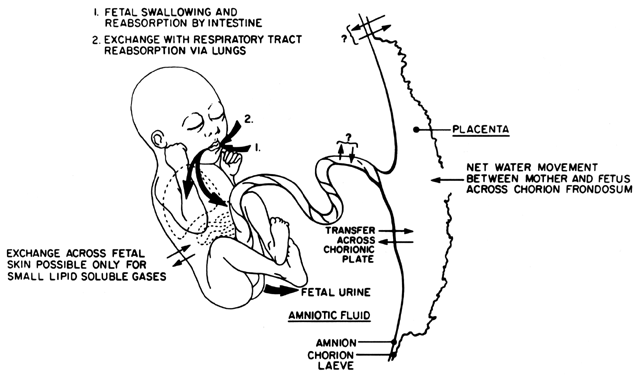

London: RCOG, 2002.A 32-year-old nulliparous woman at 40 weeks' of gestation, was admitted to the our emergency service with complaints of vaginal bleeding and pain. Current Opinion in Obstetrics and Gynaecology 2003 15:119-22.

Amniotic fluid embolism: decreased mortality in a population-based study. UKOSS Amniotic Fluid Embolism DCF References The study will therefore aim to collect data on 30 cases over three years. On the basis of data from the voluntary register, the study may expect to identify up to 10 cases over a one year period 2. The study will run initially for three years. OR a pathological diagnosis (presence of fetal squames or hair in the lungs). The cases will be all women in the UK identified as having amniotic fluid embolism using the following definition:ĮITHER a clinical diagnosis of AFE (acute hypotension or cardiac arrest, acute hypoxia or coagulopathy in the absence of any other potential explanation for the symptoms and signs observed) The incorporation of this study into the national obstetric surveillance system will improve ascertainment and allow a comprehensive study of the epidemiology and current management. A wide range of treatments have been described in case reports, but there has been no comprehensive study of the epidemiology and management of this condition in the UK.Ī database of voluntary notifications has been established in the UK to collect information on epidemiology and management. No clear risk factors are identifiable from previous cases, but some preliminary evidence suggests that earlier diagnosis may lead to better outcomes. Estimates of the mortality rate from this condition also vary widely, from as much as 86% to more recent estimates of 16-30%. Estimates of incidence vary between 1 in 8000 and 1 in 80,000 pregnancies.


What is the current incidence of amniotic fluid embolism in the UK?.Pregnancy following Bone Marrow Transplant Re-exploration after Caesarean Section Antithrombin / Protein C deficiency in pregnancy Fontan and Pregnancy COVID-19 Vaccination in Pregnancy (2021) COVID-19 in Pregnancy Extremely preterm prelabour rupture of membranes (EPPROM) (2021) Cirrhosis in Pregnancy (2020) Peripartum Hyponatraemia in Pregnancy (2020) Diabetic Ketoacidosis (DKA) in Pregnancy (2020) Impacted Fetal Head at Caesarean Section (2019) High Neuraxial Block (2019) Near-miss suicide in pregnancy (2019) Fibrinogen (2018) Seasonal Influenza (2018) WHO GLOSS (Global Maternal Sepsis Study) (2017) Spontaneous Haemoperitoneum in Pregnancy (2017) Epidural Haematoma or Abscess in Pregnancy (2017) Breast Cancer in Pregnancy (2017) Single Intrauterine Fetal Death in Monochorionic Twins (Single Twin Demise) (2017) Female Gential Mutilation Type 3 in Pregnancy (Incidence only) (2017) Zika Virus in Pregnancy (2017) Severe Epilepsy in Pregnancy (2017) Cystic Fibrosis in Pregnancy (2017) Pulmonary Embolism in Pregnancy (2016) Pulmonary Aspiration in Pregnancy (2016) Gastric Bypass in pregnancy (2016) Vasa Praevia (2015) Anaphylaxis in Pregnancy (2015) Adrenal Tumours (2015) Artificial Heart Valves (2015) Primary ITP (2015) Amniotic Fluid Embolism/AFE (2015) Advanced Maternal Age (2014) Cardiac arrest in pregnancy (2014) Stage 5 Chronic Kidney Disease (2014) Massive Transfusion in Pregnancy (2013) Pituitary Tumours (2013) Myeloproliferative Disorders (2013) Gastric banding in pregnancy (2012) Severe Maternal Sepsis (2012) HELLP syndrome (2012) Pulmonary Vascular Disease (2012) Non-renal Solid Organ Transplant (2012) Aortic Dissection (2011) Severe Obstetric Cholestasis (2011) Placenta Accreta (2011) Sickle Cell Disease (2011) Uterine Rupture (2010) Congenital Diaphragmatic Hernia (CDH) (2010) Failed Intubation (2010) Stroke in Pregnancy (2010) Myocardial Infarction (2010) A/H1N1v Influenza in Pregnancy (2009) Renal Transplant (2009) Multiple Repeat Caesarean Section (2009) Malaria (2009) Therapies for Peripartum Haemorrhage (2009) FMAIT (2008) Extreme Obesity (2008) Gastroschisis (2007) Antenatal Pulmonary Embolism (2006) Tuberculosis in Pregnancy (2006) Acute Fatty Liver in Pregnancy (2006) Peripartum Hysterectomy (2006) Eclampsia (2006)


 0 kommentar(er)
0 kommentar(er)
